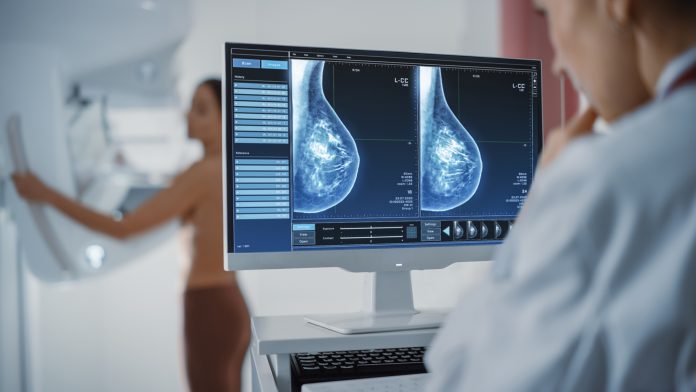
Lund University research suggests that AI breast cancer screening is a safe alternative to traditional screening, identifies more cancer cases, and is more efficient.
The Mammography Screening with Artificial Intelligence (MASAI) trial found that AI breast cancer screening identifies 20% more cancers, and reduces the workload of radiologists by over 40%.
Leveraging AI in mammography could help to cut waiting times for millions of breast cancer patients worldwide and improve outcomes.
Current diagnostic methods are slow
In Sweden alone, around one million women are called for mammography screening each year, with each examination reviewed by two breast radiologists to ensure a high sensitivity ‘double reading’.
However, due to a shortage of breast radiologists, growing backlogs can put patients at risk. Because of this, experts are exploring AI breast cancer screening.
The MASAI trial is the first randomised controlled study examining the effect of AI-supported screening.
How was the MASAI trial performed?
The MASAI trial, 80,033 women were randomly allocated into two groups: 40,003 women in the intervention group that underwent AI breast cancer screening, and 40,030 in the control group that received standard double reading without AI support.
Leader of the study, Kristina Lång, a researcher and associate professor in diagnostic radiology at Lund University, explained the exciting results of the trial.
She said: “We found that using AI resulted in the detection of 20% (41) more cancers compared with standard screening, without affecting false positives. A false positive in screening occurs when a woman is recalled but cleared of suspicion of cancer after workup.”
The number of screen readings with AI-supported screening was 46,345 compared with 83,231 with standard screening, which reduced the radiologist’s screen-reading workload by 44%.
This is major boost to screening efficiency, as radiologists usually read 50 screening examinations per hour. Estimates suggest that AI breast cancer screening could cut screen reading times by five months.
Next steps for the breast cancer project
The team plans to investigate the cancer types that were detected with and without AI, with the primary endpoint of the trial being interval cancer rate.
Interval cancer rate is a diagnosed cancer between screenings and usually have poorer prognosis than screen-detected cancers.
The inter cancer rate will be assessed in the trial’s women once they have has at least a two-year follow up.
Lång concluded: “Screening is complex. The balance between benefit and harm must always be taken into account. Just because a screening method finds more cancers does not necessarily mean it’s a better method.
“What’s important is to find a method that can identify clinically significant cancers at an early stage. However, this has to be balanced with the harm of false positives and the overdiagnosis of indolent cancers.
“The results from our first analysis shows that AI-supported screening is safe since the cancer detection rate did not decline despite a substantial reduction in the screen-reading workload.
“The planned analysis of interval cancers will show whether AI-supported screening also leads to a more accurate and effective screening programme.”







